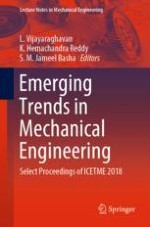This book comprises select proceedings of the International Conference on Emerging Trends in Mechanical Engineering (ICETME 2018). The book covers various topics of mechanical engineering like computational fluid dynamics, heat transfer, machine dynamics, tribology, and composite materials. In addition, relevant studies in the allied fields of manufacturing, industrial and production engineering are also covered. The applications of latest tools and techniques in the context of mechanical engineering problems are discussed in this book. The contents of this book will be useful for students, researchers as well as industry professionals.
